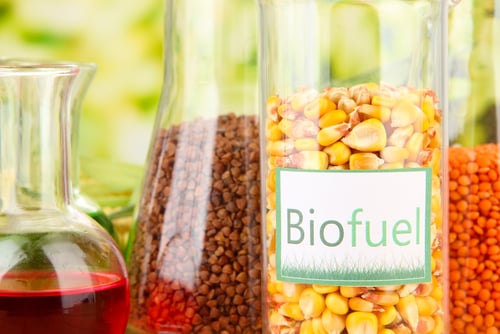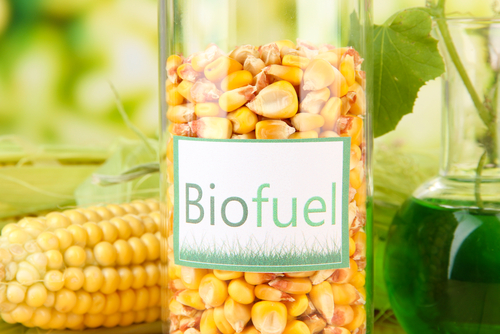What is Renewable Diesel?
ESG & Industry Updates
National Grid to Pivot NY to Renewable Nat Gas, Green Hydrogen Power
Posted by Kelly Burke on Jul 7, 2022 3:30:00 PM
Topics: New York, Biofuels, Carbon Emissions, renewable energy, hydrogen
Maine Based AeroSpace Company breaks Bio Barriers at -14 & Zero G
Posted by Kelly Burke on Mar 17, 2021 9:46:00 AM
Maine-based bluShift Aerospace successfully launched and landed the first commercial rocket powered by biofuel on January 31st of this year. Not only did the rocket successfully launch running on bio, but it did so at a staggering -14 degrees fahrenheit!
EPA Finalizes 2018 RFS Volume,Declines Obligated Party Change Proposal
Posted by Ed Burke on Dec 1, 2017 5:22:05 PM
Yesterday (November 30th) the EPA finalized renewable volume obligations for the RFS for 2018 and the RVO levels for 2019.
Topics: EPA Mandate, RINs, Biofuels, Cellulosic Ethanol, EPA, RFS
EPA's 2017 RFS Volume Proposal Draws Familiar Concerns
Posted by Ed Burke on Jul 20, 2016 8:20:00 AM
Topics: EPA Mandate, Biofuels, RFS
As of November, the EPA finally released its final renewable volume obligations for 2014, 2015, and 2016.
Topics: Ethanol, Biofuels, RFS, renewable energy
Grassy Hillsides plowed into crop rows. Millions of acres of conservation land converted to corn fields. Fertilizer runoff polluting lakes and streams. All to produce a "green" fuel source.... Or that's the picture painted by an AP article slash expose anyway.
Topics: E85, Ethanol, EPA Mandate, RINs, Biofuels, EPA, Blend Wall, RFS
Environmentalists & Oil Exec's Unite on RFS Volume Reduction
Posted by Kelly Burke on Jan 14, 2014 9:47:00 AM
Topics: Oil & Energy Magazine, Ethanol, EPA Mandate, Biofuels, EPA, RFS
API Sues EPA on Cellulosic Ethanol portion of 2011 RFS
Posted by Ed Burke on Jul 27, 2012 12:19:00 PM
Interesting timing - yesterday I linked to my article in Oil & Energy Magazine giving an overview of the state of the Cellulosic Ethanol Industry and the EPA's mandate that 2012 production hits 8.65 million gallons per the 2011 Renewable Fuels Standard (RFS). I mentioned that critics argued that commercial production of Cellulosic remains at low enough levels that many argue they cannot possibly hit the target set by the EPA, despite steps forward that have been made in production.
Topics: Biofuels, Cellulosic Ethanol, EPA, API
Cellulosic Ethanol Production: Benefits, Progress, and Challenges
Posted by Ed Burke on Jul 26, 2012 1:56:00 PM
The EPA has mandated that in 2012 Cellulosic Ethanol production hits 8.65 million gallons
Topics: Commodities, E85, Oil & Energy Magazine, Biofuels, Cellulosic Ethanol
Subscribe to Email Updates
Recent Posts
Posts by Topic
- Carbon Emissions (42)
- Climate Change (32)
- renewable energy (31)
- Oil & Energy Magazine (27)
- EPA (24)
- Massachusetts (21)
- Biden Administration (18)
- decarbonization (15)
- Biodiesel (12)
- natural gas (12)
- EPA Mandate (11)
- RFS (11)
- Solar (11)
- Biofuels (10)
- Keystone XL (10)
- methane (10)
- Clean Energy (9)
- offshore wind (9)
- Energy Independence (8)
- Energy Infrastructure (8)
- Safety (8)
- Biodiesel Tax Credit (7)
- Emissions (7)
- Ethanol (7)
- ev (7)
- Cellulosic Ethanol (6)
- EV Charger (6)
- RINs (6)
- Trump Administration (6)
- environmental justice (6)
- Fracking (5)
- Inflation Reduction Act (5)
- Technology (5)
- US Crude Exports (5)
- Utility Rates (5)
- electric vehicles (5)
- maine (5)
- tesla (5)
- ACT (4)
- Mass DOER (4)
- TransCanada (4)
- battery (4)
- fuel management (4)
- massachusetts biodiesel mandate (4)
- obama (4)
- paris accord (4)
- remote tank monitoring (4)
- CARB (3)
- CRUDE (3)
- Carbon Capture (3)
- Clean Fuel Production Credit (3)
- E85 (3)
- Emergency Fuel (3)
- Massachusetts Clean Cities (3)
- Waste Feedstock Biodiesel (3)
- china (3)
- clean power plan (3)
- electricity rates (3)
- net-zero (3)
- renewable diesel (3)
- solid state battery (3)
- AI (2)
- AVs (2)
- Bioheat (2)
- Commodities (2)
- Congress (2)
- Customer Service (2)
- DOT (2)
- EIA (2)
- Emergency Generator Program (2)
- HFCs (2)
- Hurricane Sandy (2)
- IMO 2020 (2)
- MIT (2)
- Marinas (2)
- New York (2)
- Refinery Closures (2)
- Safe Driving Policy (2)
- TCI (2)
- US Energy Boom (2)
- ZEV (2)
- autonomous vehicles (2)
- clean air act (2)
- coal (2)
- driver shortage (2)
- emergency response (2)
- environment (2)
- ferc (2)
- geothermal (2)
- hydro-electric (2)
- hydrogen (2)
- national grid (2)
- net metering (2)
- power plant emissions (2)
- power plants (2)
- railcar regulations (2)
- tariff (2)
- vineyard wind (2)
- API (1)
- Air conditioning (1)
- Baiji Refinery (1)
- Blend Wall (1)
- Brent Crude (1)
- Brent vs WTI (1)
- CFCs (1)
- Cell Phone Policy (1)
- Clean Water Act (1)
- DEF (1)
- Election Results (1)
- Electrical Grid (1)
- Energy Efficiency (1)
- Environmental Impact Study (1)
- Environmentally Friendly Products (1)
- Ethanol Tax Credit (1)
- FEMA (1)
- Fiscal Cliff (1)
- Gas Tax (1)
- Gasoline Supply Crunch (1)
- HDVC (1)
- Hazmat (1)
- Heat Tax (1)
- Highway Trust Fund (1)
- Holyoke (1)
- Hybrid (1)
- ISIS (1)
- Iraq (1)
- Kigali Amendment (1)
- MOC (1)
- Market analysis (1)
- Mayflower (1)
- Montreal Protocol (1)
- NORA (1)
- Natural Gas Pipeline Explosion (1)
- New Jersey (1)
- Oil Barrel Tax (1)
- PFC (1)
- Pegasus Pipeline (1)
- Propane Autogas (1)
- Stimulus (1)
- Syria (1)
- Tank Truck Safety Training (1)
- Tax Increases (1)
- Tier 3 Gasoline Standard (1)
- Times Square (1)
- VEEP (1)
- Workplace Risk (1)
- agriculture (1)
- algonquin pipeline (1)
- alternative energy (1)
- altwheels (1)
- astm (1)
- bionic leaf (1)
- bitcoin (1)
- boston (1)
- clean heat standard (1)
- covid-19 (1)
- energy storage (1)
- eversource (1)
- export ban (1)
- fixed pricing (1)
- fuel (1)
- fuel efficiency (1)
- fuel marketers news (1)
- gas leaks (1)
- heating oil (1)
- hurricane harvey (1)
- inflation (1)
- irving oil (1)
- marketing (1)
- nuclear (1)
- online fuel buying (1)
- ozone (1)
- photovoltaic (1)
- pilot program (1)
- pipeline (1)
- propane (1)
- renewable natural gas (1)
- rggi (1)
- russia (1)
- sanctions (1)
- senate (1)
- shale (1)
- social media (1)
- social media for business (1)
- space (1)
- tablets (1)
- tennessee pipeline (1)
- ukraine, (1)
- value added services (1)


.jpg)


